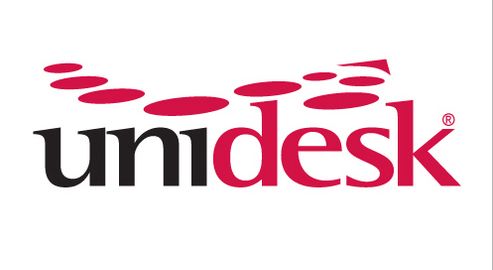Unidesk’s customer and partner momentum is confirming that desktop layering is the key to overcoming many of the cost, complexity, and user acceptance challenges that have stalled broader Virtual Desktop Infrastructure (VDI) adoption. In the company’s fiscal quarter ending December 31, 2011, Unidesk added 45 new customers across a wide range of industries, including education, state and local government, and healthcare. The desktop layering leader’s strong Q4 performance was assisted by key solution partners BEAR Data Solutions, KIS, NWN, Novosco, and Presidio, as well as new strategic partner Dell, which now offers Unidesk as a validated management option for Dell Desktop Virtualization Solutions (DVS) with both Citrix® XenDesktop® and VMware View™. To better serve its rapidly expanding customer base, Unidesk is kicking off 2012 with enhancements to its virtual desktop management software to further simplify Windows patching, application delivery, and desktop maintenance.
Some of Unidesk’s new customers and their solution providers include Coastal Federal Credit Union (Presidio), County of Ventura (Compuwave), Garland Power & Light (Dell), Hartnell College (KIS), ISO New England (Daymark), Lowell General Hospital (Presidio), Mercer University (Presidio), OhioHealth (Mainline), Santa Clara County Office of Education (Dell), Tennessee Tech University (Dell), Tulare County (KIS), and University of California Office of the President (KIS).
Hartnell College of Salinas, Calif. is working with solution provider KIS to implement over 1,000 virtual desktops with Unidesk® and VMware View. According to Matthew Coombs, Hartnell College CIO, Unidesk is the best way to keep VDI simple for his small IT team, satisfy the college’s many use cases, and reduce operational costs. “VDI is going to dramatically increase access to critical educational resources for our students and our community. Like many IT organizations, we need to do more with less, so deploying and maintaining desktops and dealing with application variance cannot be someone’s full-time job. Unidesk is our secret IT weapon, giving an IT staff that wears many hats an easier way to provision and manage hundreds of different apps and desktops, and meet the custom requirements of our students, faculty members, and administrators.”
Desktop administrators looking to further simplify how and when new applications, application updates, and Windows patches are delivered to virtual desktops are receiving a boost this week with a new software release of Unidesk. Maintenance Schedules, a new feature now available in Unidesk 1.5, provides granular control over managing desktop updates so administrators can minimize impact on worker productivity. With Maintenance Schedules, administrators can define the time periods when physical configuration and layer assignment changes are applied to all or a subset of desktops. Desktops can be updated overnight, on weekends, and during other periods when end users are not actively using their desktops. Changes can be applied according to the defined schedules, as soon as possible, at specific times, or at next logoff.
According to Dru Lesnick, Assistant Vice President of Information Systems at Farmers Mutual Hail Insurance in West Des Moines, Iowa, “The new Maintenance Scheduling feature is big. Our Unidesk Layer Builders can update an OS or an application layer during the day, assign it, and not worry that if a user reboots they will have an unexpected wait while the new layers recombine.” Added Lesnick, “Our property and casualty application has web and workstation components that require updates every few weeks. Being able to package these ahead of time and then schedule the rollout will make it much easier to coordinate the updates.”
Unidesk’s new Maintenance Schedules simplify desktops updates for both non-persistent and persistent desktop user cases.
- A university lab with non-persistent virtual desktops can be updated in stages to ensure that a minimum number of desktops are always available 24×7.
- A city government can update its pools of persistent office worker desktops overnight and on weekends when the desktops are not being used, and update persistent police and fire department desktops that may be used around the clock only at log off.
- A manufacturer or healthcare organization with shared, shift worker desktops can schedule updates around staff rotations.
Maintenance Schedules are the latest example of how Unidesk is combining advanced desktop management features with unequalled layering technology to make virtual desktops hosted on VMware vSphere® easier to implement and manage. With Unidesk, enterprises of all sizes finally have a simpler and more complete alternative to the costly and complex stack of profile management, application virtualization, PC configuration, and cloning point tools typically used in VDI.
“The truest measure of success in any market is customer momentum, and we’re thankful to our customers and partners for helping establish Unidesk as the management platform for VDI success in 2011,” said Don Bulens, Unidesk CEO. “We’re proving that Unidesk desktop layering is the best way for IT to provide Windows desktops as a service to their users, get out of the endpoint management business, and prepare for the day when any app is available from any device.”
